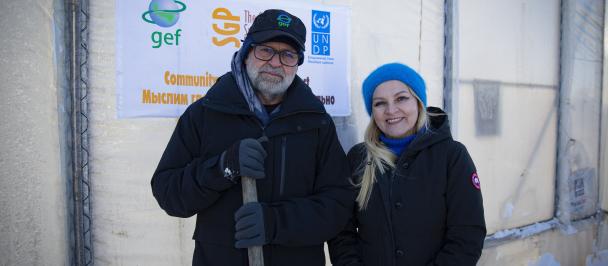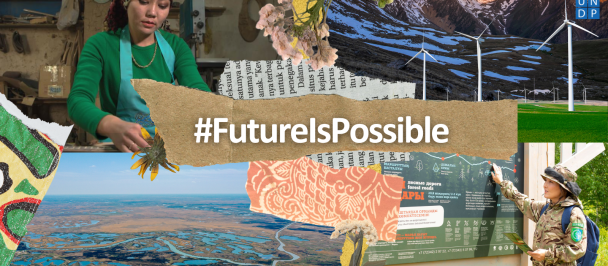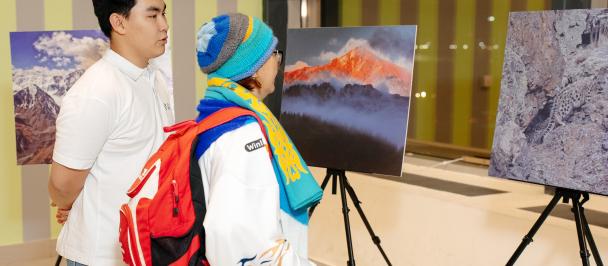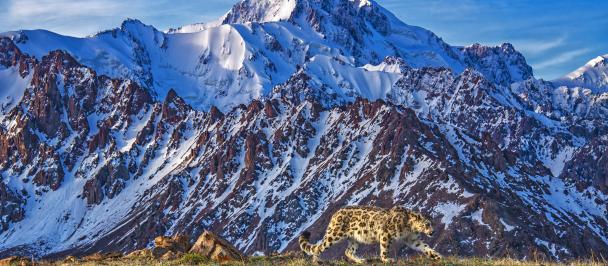A warning on fallout of destruction of saxaul forests
"4 tons of sand" art-installation unveiled in Zhambyl region
October 19, 2022
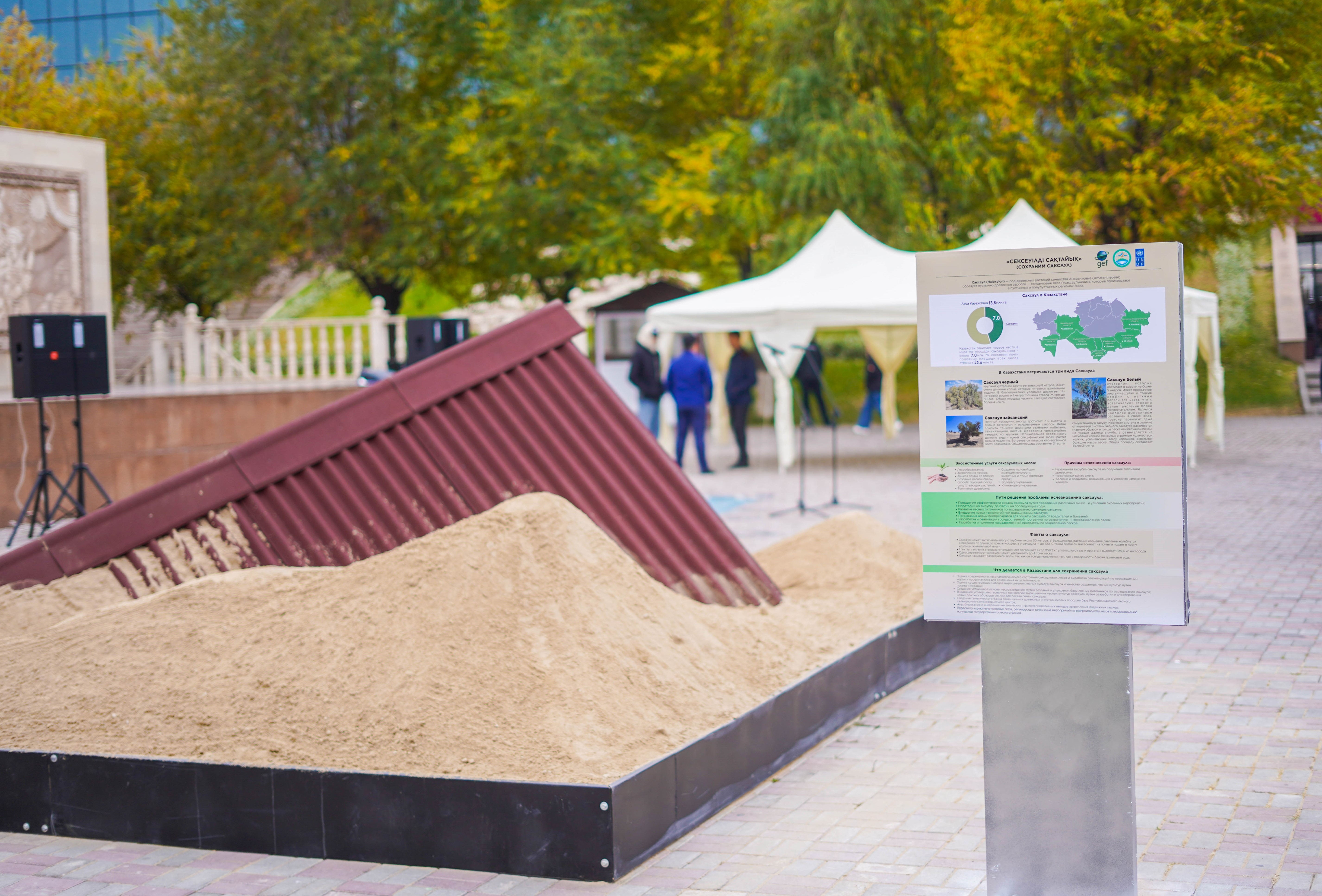
Taraz, October 19, 2022 – Desertification and deforestation are a serious threat in Kazakhstan represented by the large-scale felling of the saxaul tree, which has been the traditional protector of the lands from such ecological perils. A recent exhibit “4 tons of sand” brings the message home.
The art installation was recently unveiled to residents and guests in Taraz city in a ceremony attended by Nurzhan Kalenderov, Deputy Akim of Zhambyl region, Daniyar Turgambayev, Deputy Chairman of Forestry and Wildlife Committee, Ministry of Ecology, Geology and Natural Resources, and Sukhrob Khojimatov, UNDP Resident Representative a.i.
The “4 tons of sand” installation represents a house half covered with sand brought from a nearby desert. The "Immersed House" demonstrates the sand approaching the villages due to felling of the saxaul trees. The use of 4 tons of sand for the art-facility is symbolic, since a saxaul tree with its powerful roots can hold exactly this amount of sand and save the land from becoming harsh salt marshes and deserts.
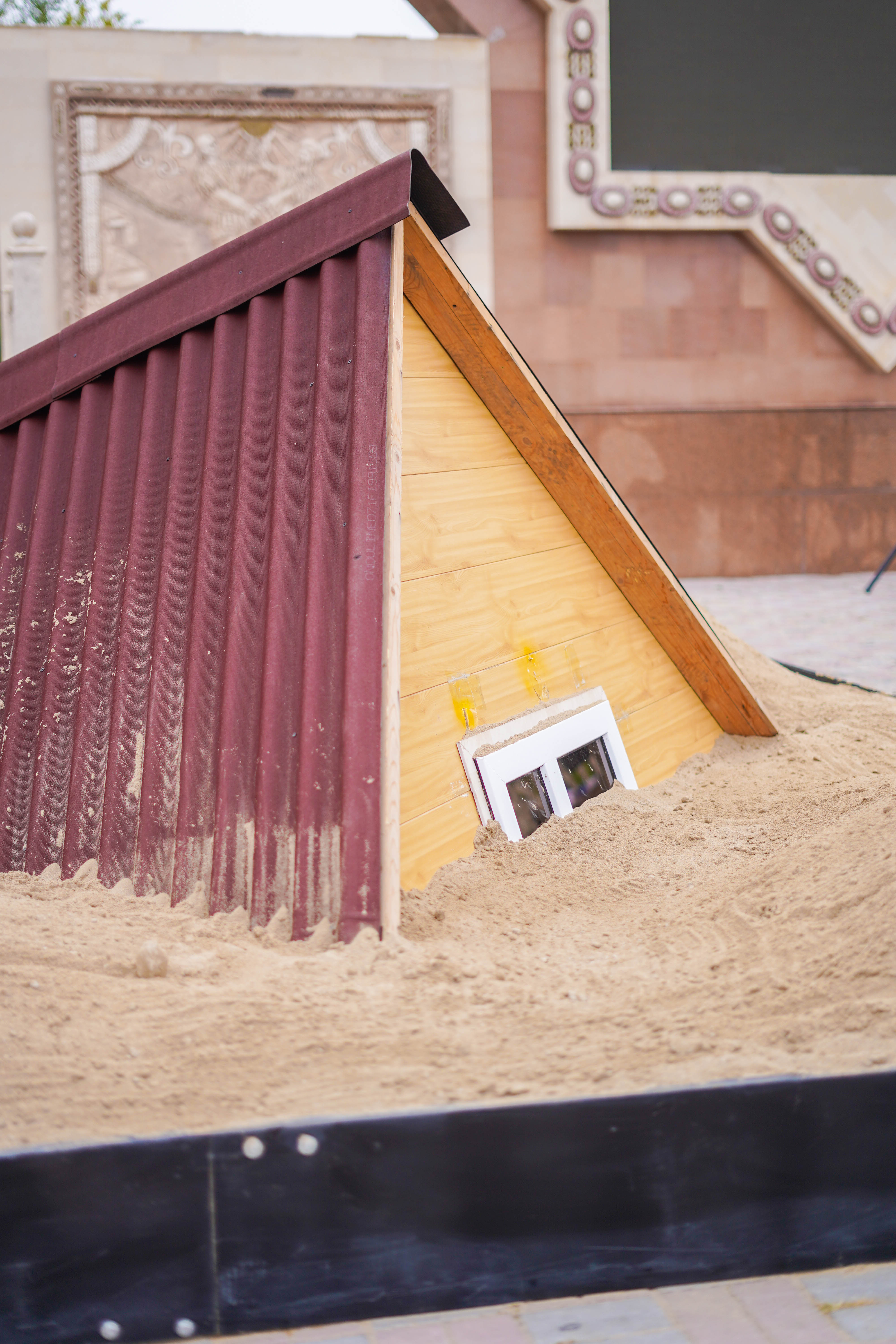
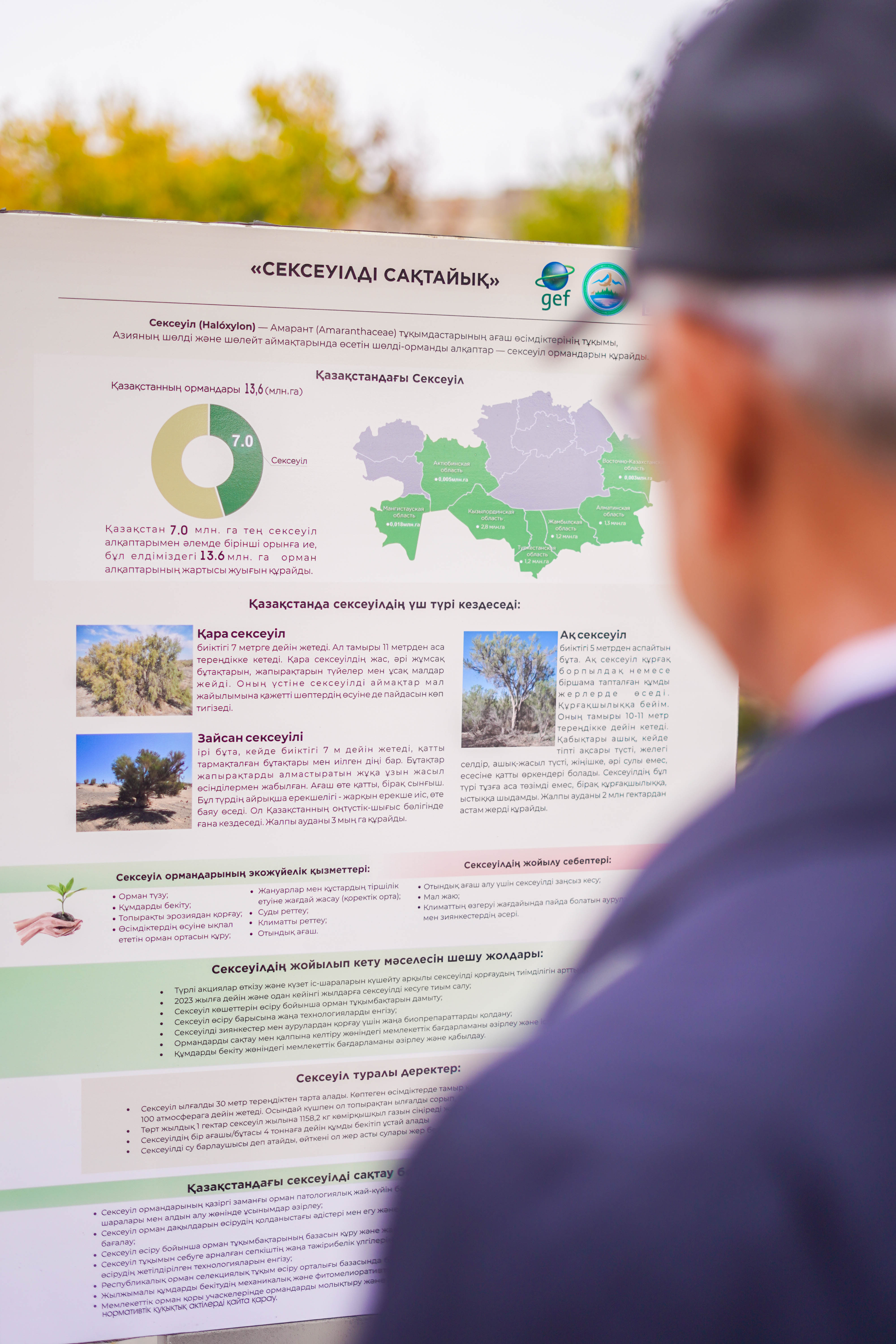
The event is part of the annual national campaign “Sekseuildi saktayyk” ("Save the Saxaul"), jointly held by the United Nations Development Programme (UNDP), the Ministry of Ecology, Geology and Natural Resources (the Ministry), and local executive authorities to raise awareness about the role of saxaul forests in safeguarding Kazakhstan’s lands from degradation and desertification.
Only 4.9 percent of the land is forest, almost half of which is saxaul. Despite the current legal moratorium in the country, the symbol of the Kazakh deserts is threatened with extinction. Excessive deforestation is the cause, as well as its use as fuel for cooking and heating homes by the local population, forest fires, and diseases and pests resulting from climate change.
The problem of land degradation and desertification has recently become very acute in the Zhambyl region. Desertification is progressing, especially in the vast sandy areas of Moiynkum and Shu districts, and in the vastness of Betpakdala. Despite the current legal moratorium in the country, the symbol of the Kazakh steppes is in danger of disappearing.
“Kazakhstan is number one in the world with an area of 6.7 million hectares where the saxaul grows. It plays an important role in preserving the ecosystems of our country and is the habitat of many wild animals and plants. In the Zhambyl region alone, there are 15 forest enterprises managing more than 4.5 million hectares. 2.2 million of them are covered with saxaul forests. Every year the forest enterprises of the region plant about 5,000 to 7,000 hectares of saxaul. The art object "4 tons of sand" shows the inhabitants and guests of our city and region the consequences of deforestation of the saxaul tree, which leads to desertification. The information campaign is just a small step towards our common goal of biodiversity conservation. We hope that this initiative will gain momentum every year,”Nurzhan Kalenderov, deputy akim of Zhambyl region.
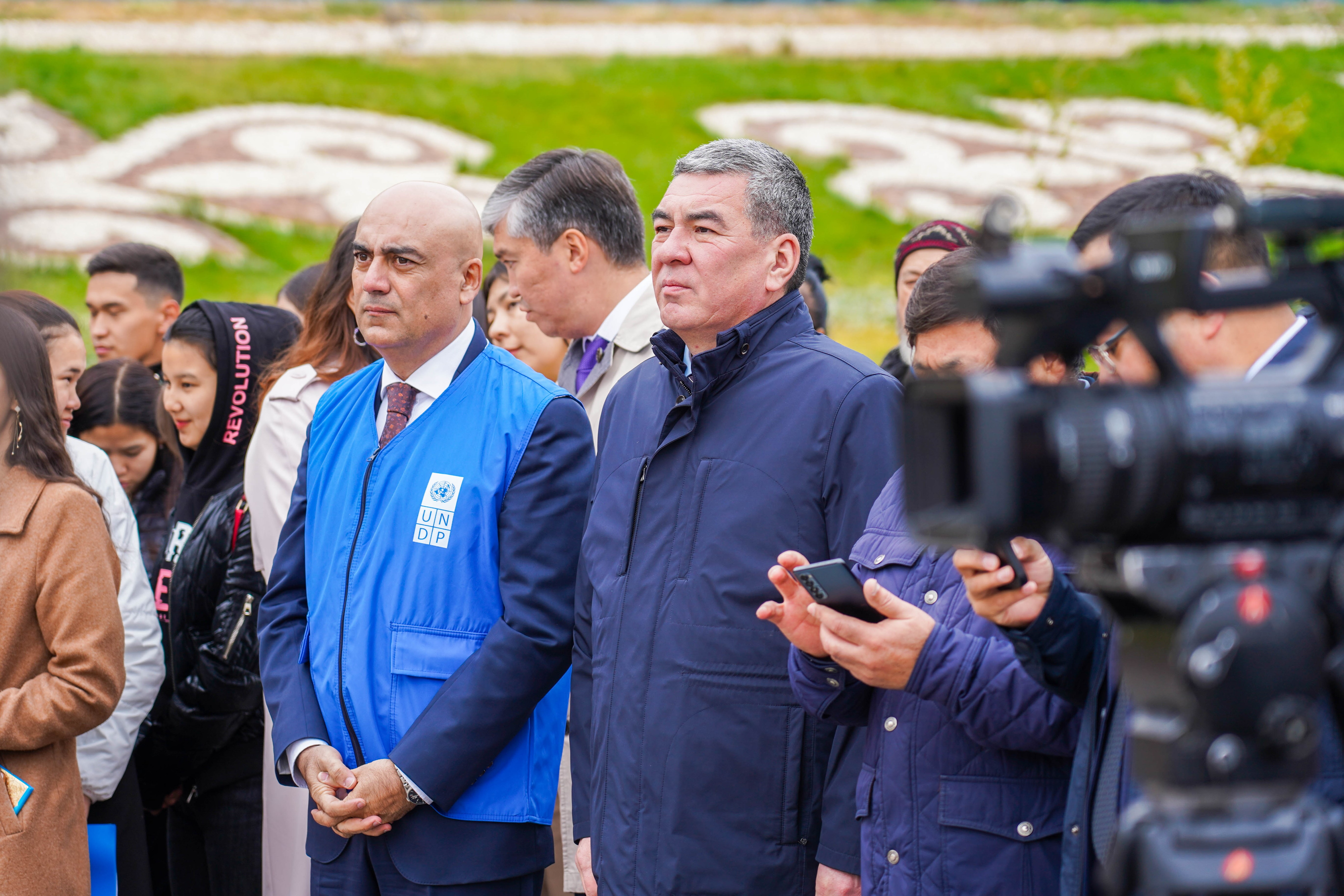
"The Ministry of Ecology, Geology and Natural Resources, together with the akimats of the regions, is working on large-scale landscaping of the Republic, for which the volumes of tree plantations have been determined by region. Thus, 1.1 billion trees are being planted on an area of 464,000 hectares by the akimats' nature conservation and forest protection institutions. The largest volumes of forest planting are carried out in Turkestan, Kyzylorda and Zhambyl regions. At the same time, most of the planting will be carried out by sowing the saxaul, including on the drained bottom of the Aral Sea,"said Daniyar Turgambaev, deputy chairman of the Forestry and Wildlife Committee.
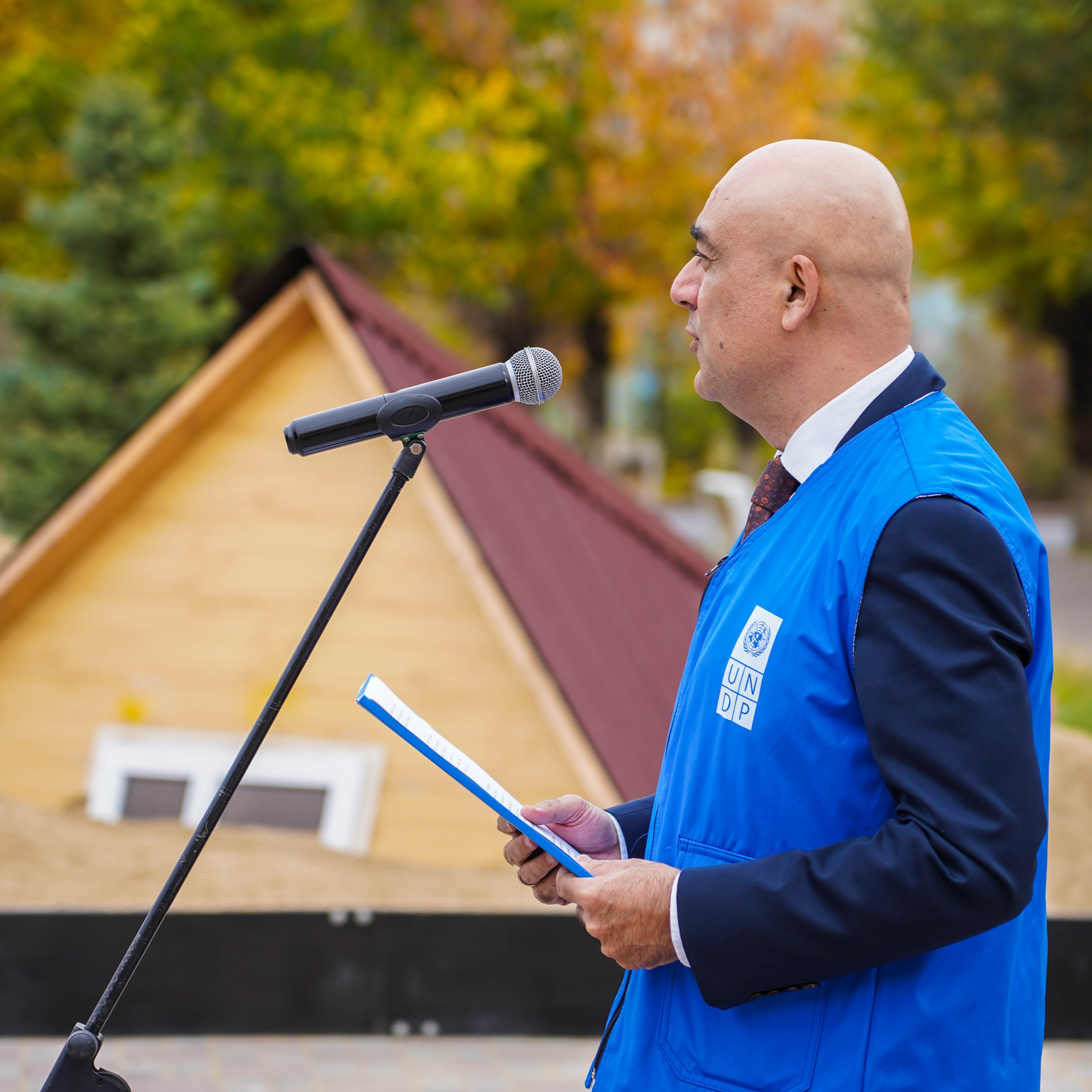
“UNDP has been a long-standing key partner of the Government of Kazakhstan in protecting, conserving and restoring biodiversity and ecosystems of Kazakhstan. With support from the Global Environmental Facility and in collaboration with national partners, UNDP is implementing a number of projects to restore and conserve forests, including the saxaul, which is of particular value for the country's biodiversity,”noted Sukhrob Khojimatov, UNDP Resident Representative a.i.

 Locations
Locations




